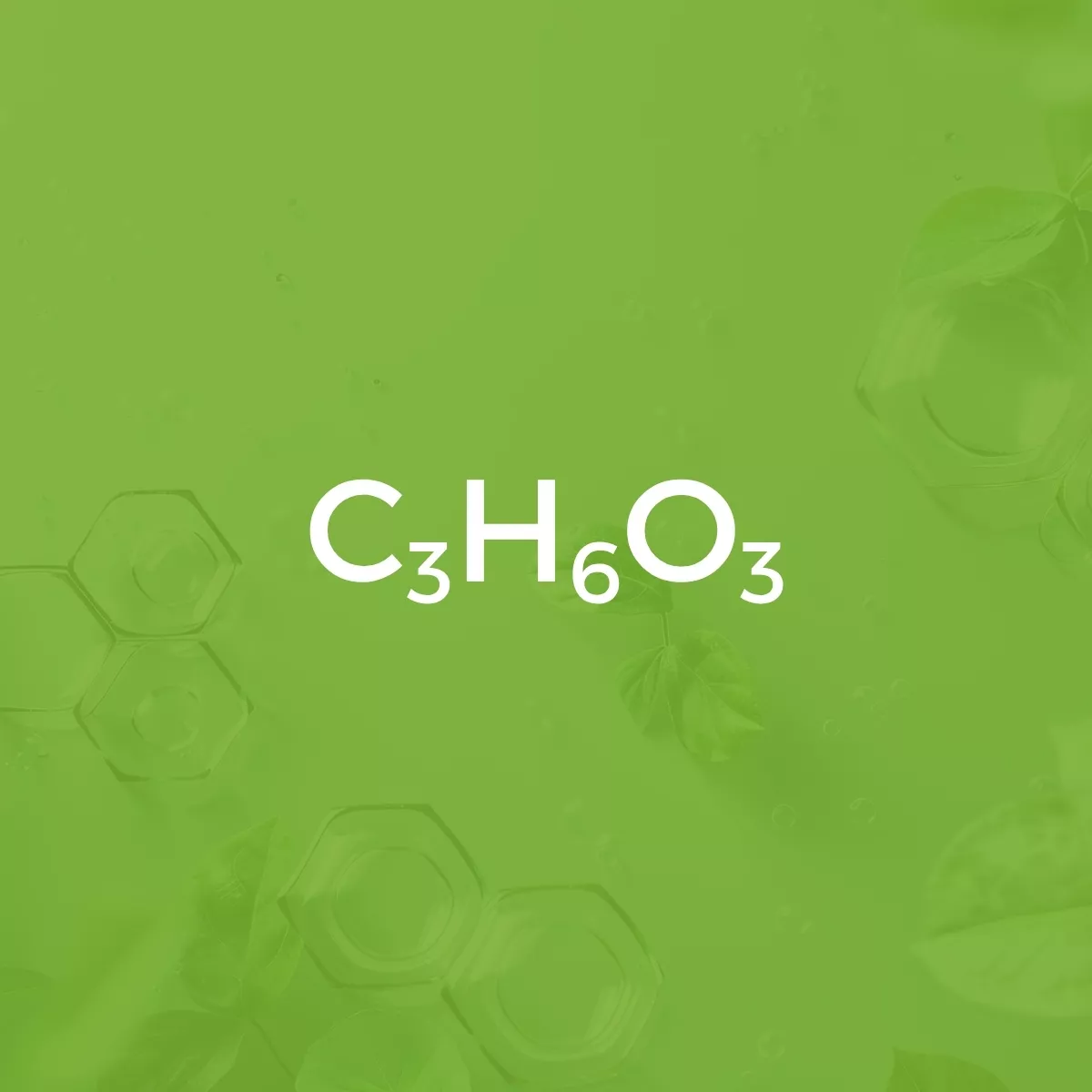
Lactic Acid 80%
Milk Acid; 2-Hydroxypropanoic Acid; E270
Key applications
Contact us
directly:
QUICK QUOTE FORM
What Is Lactic Acid and How Is It Produced?
Lactic acid is most commonly obtained through the fermentation of sugars such as glucose or sucrose, using lactic acid bacteria from the Lactobacillus group. This method results in a high-purity product while supporting environmentally responsible manufacturing. As a bio-based raw material, lactic acid aligns with the principles of sustainable production. In addition to its natural origin, it does not accumulate in the environment or cause long-term pollution. Thanks to these characteristics, milk acid is widely recognized as an eco-friendly ingredient in numerous industrial applications.
Lactic acid is a colorless, clear liquid with a distinctive, mildly sour scent reminiscent of fermented dairy products such as sourdough or cultured milk. It is highly soluble in both water and alcohol, and its texture is slightly viscous. In industrial applications, it is most commonly available as a high-concentration solution – lactic acid 80% – a concentrated form widely used across sectors ranging from food to technical industries. This E270 food additive offers acidifying, preserving, and chelating properties, making it a versatile and functional ingredient in many formulations.


Lactic Acid in Cosmetics – Properties and Applications
In the cosmetics industry, lactic acid is a naturally derived active compound classified as an alpha hydroxy acid (AHA). It is a valued ingredient in creams, serums, exfoliants, and cleansing gels, and is commonly found in intimate hygiene products. Milk acid is appreciated for its wide range of cosmetic benefits, including the following properties:
- Exfoliating (keratolytic) action – lactic acid supports the skin renewal process by gently removing dead skin cells, resulting in a smoother, brighter complexion. It also helps reduce the formation of blackheads. With regular use, it improves skin firmness and elasticity by stimulating collagen and elastin production in the deeper layers of the skin.
- Moisturizing and water-binding properties – lactic acid functions as a natural moisturizing factor (NMF), boosting skin hydration and helping maintain optimal moisture levels. It also supports ceramide production, strengthening the skin’s protective barrier and enhancing its resistance to external aggressors.
- pH-regulating properties – lactic acid helps maintain the skin’s optimal pH balance, which is essential for its natural defense mechanisms. It stabilizes the skin’s microbiome, enhances the effectiveness of preservatives, and protects against the growth of unwanted microorganisms – especially in cosmetic formulations with higher concentrations of lactic acid.
- Support for acne-prone and hyperpigmented skin – lactic acid helps even out skin tone, reduces the appearance of blemishes, and supports epidermal regeneration. Thanks to its gentle action, it can also be used on sensitive or irritation-prone skin, making it a suitable ingredient in toners and skincare products formulated for problematic skin.
- Compatibility with other active ingredients – lactic acid is well tolerated in multi-ingredient formulations and works effectively alongside compounds such as hyaluronic acid, niacinamide, and vitamin C. It enhances their performance, improves the penetration of active ingredients, and is also used in hair and scalp care products.

Lactic Acid E270 – Food Additive and Acidity Regulator
In the food industry, lactic acid (designated as E270) serves several important technological and functional roles. It is a naturally derived ingredient that is well tolerated by the human body and widely used in both conventional and organic food formulations. The most common applications of lactic acid in food include:
- regulating the acidity of food products, especially in beverages, dairy products, fruit and vegetable preserves, and baked goods;
- extending microbiological shelf life – supports the action of preservatives and helps inhibit the growth of unwanted microorganisms;
- supporting fermentation processes – naturally present in fermented foods such as pickles, sourdough, and fermented beverages;
- enhancing flavor profile – its mild acidity helps create a more balanced and palatable taste in food products;
- use in clean label products – recognized and accepted by consumers as a familiar, natural additive.

Lactic Acid for Poultry – Applications in Animal Farming
Lactic acid is widely used in the farming of chickens, turkeys, and pigeons as a feed additive that supports digestive health and improves the overall condition of the flock. It serves as a feed raw material and a component of feed mixtures, used both directly and as an ingredient in water acidification solutions. The key functions of lactic acid in poultry nutrition include:
- pH regulator in the digestive tract – helps inhibit the growth of pathogenic microorganisms such as Salmonella and E. coli.
- improved feed digestibility and nutrient bioavailability,
- supporting the development of natural intestinal microflora,
- stabilizing effect during periods of stress, dietary changes, or recovery,
- suitable for antibiotic-free feeding, which is important in alternative and organic production.

Lactic Acid in Leather Tanning
In the leather tanning industry, lactic acid is a mild acidifying agent and a supporting processing material. Its role in leather treatment enables more precise control over the chemical parameters of tanning baths, directly influencing the quality of the final product. Thanks to its gentle acidity and excellent water solubility, lactic acid helps create stable and safe tanning conditions. The most common applications of lactic acid in leather processing include:
- acidifying the bath before chrome tanning – allows for gradual pH reduction and improves the penetration of tanning agents into the leather structure,
- calcium removal (decalcification) – lactic acid helps cleanse collagen fibers after liming and prepares the hide for further processing,
- improving leather softness and flexibility – helps achieve a final product with enhanced usability and aesthetic qualities,
- alternative to harsher mineral acids, such as sulfuric or hydrochloric acid – especially suitable for more sustainable and environmentally friendly production processes.

Household Chemicals – Lactic Acid as a Descaling Agent
Lactic acid is used in household chemistry and professional cleaning products as a mild, biodegradable descaling agent. Thanks to its organic nature and low aggressiveness, it is particularly suitable for formulations designed for delicate surfaces or applications involving food contact. Cleaning products containing lactic acid are effective in gently yet efficiently removing scale and residues. In this sector, lactic acid is valued for its:
- ability to dissolve limescale and boiler scale deposits,
- cleaning and degreasing properties combined with high surface safety,
- compatibility with biodegradable components, making it suitable for use in eco-friendly product lines,
- suitable for appliance cleaners (for coffee machines, kettles, dishwashers) as well as in bathroom and kitchen cleaning products.

Other Industrial Applications of Lactic Acid
Beyond the food, cosmetics, and feed industries, lactic acid is also used in various specialized industrial processes – especially where its mild action, biological origin, and biodegradability are key advantages. Additional applications of lactic acid include:
- production of biodegradable plastics – milk acid is a raw material in the manufacture of PLA (polylactic acid), which is used in packaging, textiles, and medical materials,
- pH regulation in fermentation and biotechnology processes – lactic acid acts as a medium regulator, helping to control microbiological conditions,
- in the pharmaceutical industry – serves as an excipient in oral and dermatological formulations,
- chelating agent in industrial chemical formulations – used, among others, in technical water conditioning products,
- component of plant protection products and fertilizers – especially in solutions based on environmentally friendly technology.


Why it is worth cooperating with us?
Order quickly, efficiently, reduce risk.
The chemical raw materials you’re looking for are in our warehouses
Our own warehouses, fleet of trucks, and stable supply chain mean wide availability and fast order fulfillment
No worries about the quality of chemical raw materials
Concrete actions, not just words, confirm the quality of the materials we offer. It’s our implemented ISO system, HACCP and GMP+ certification, or the GMP+B4 fleet standard
Risk minimized to the minimum
We fully control the supply chain in Poland and worldwide. We have our own fleet of trucks, warehouses, customs warehouses, and a platform for container transport.
Convenient packaging with customization options
Bags, big bags, tanks, pallet containers, barrels, jerrycans, bottles... we tailor the packaging to your needs. We can also provide personalized labels for you.
Partnership at every stage
We respond to inquiries within a maximum of 30 minutes, assign a dedicated account manager, keep our promises, and focus on long-term cooperation.
bonded warehouses
years of experience
trading partners from all over the world
trucks
countries we cooperate with
warehouse area
